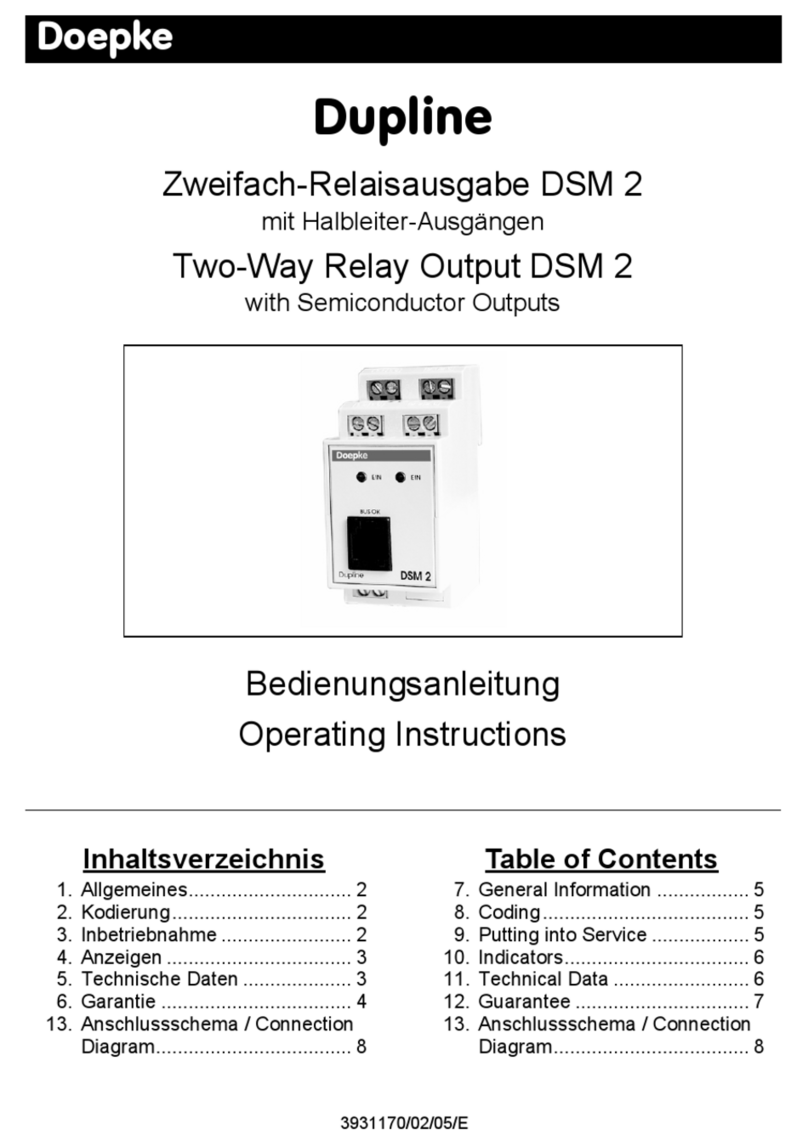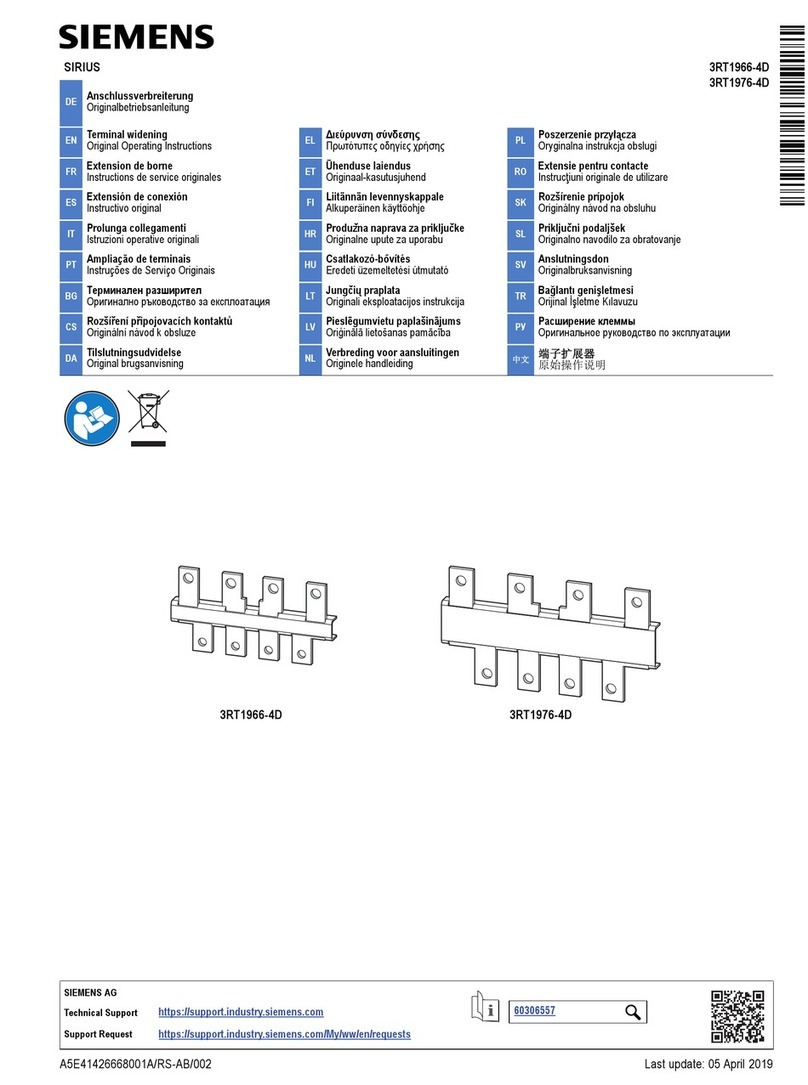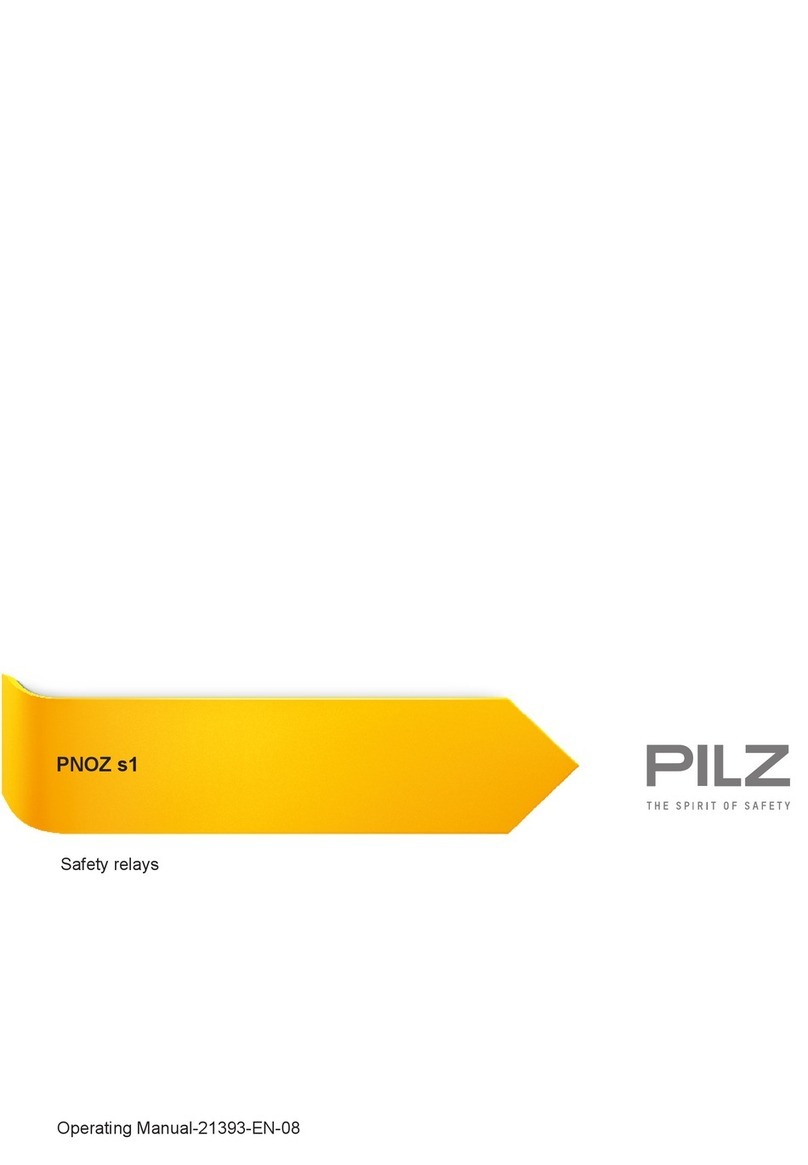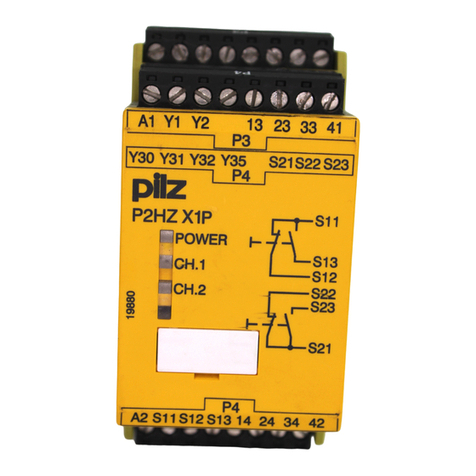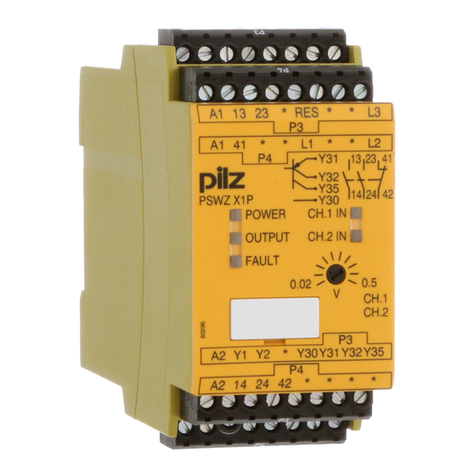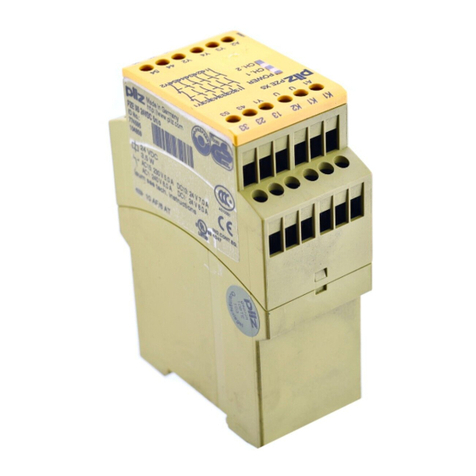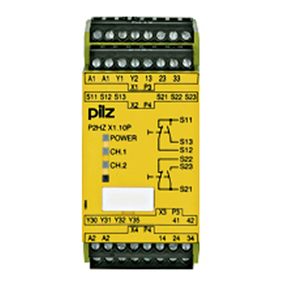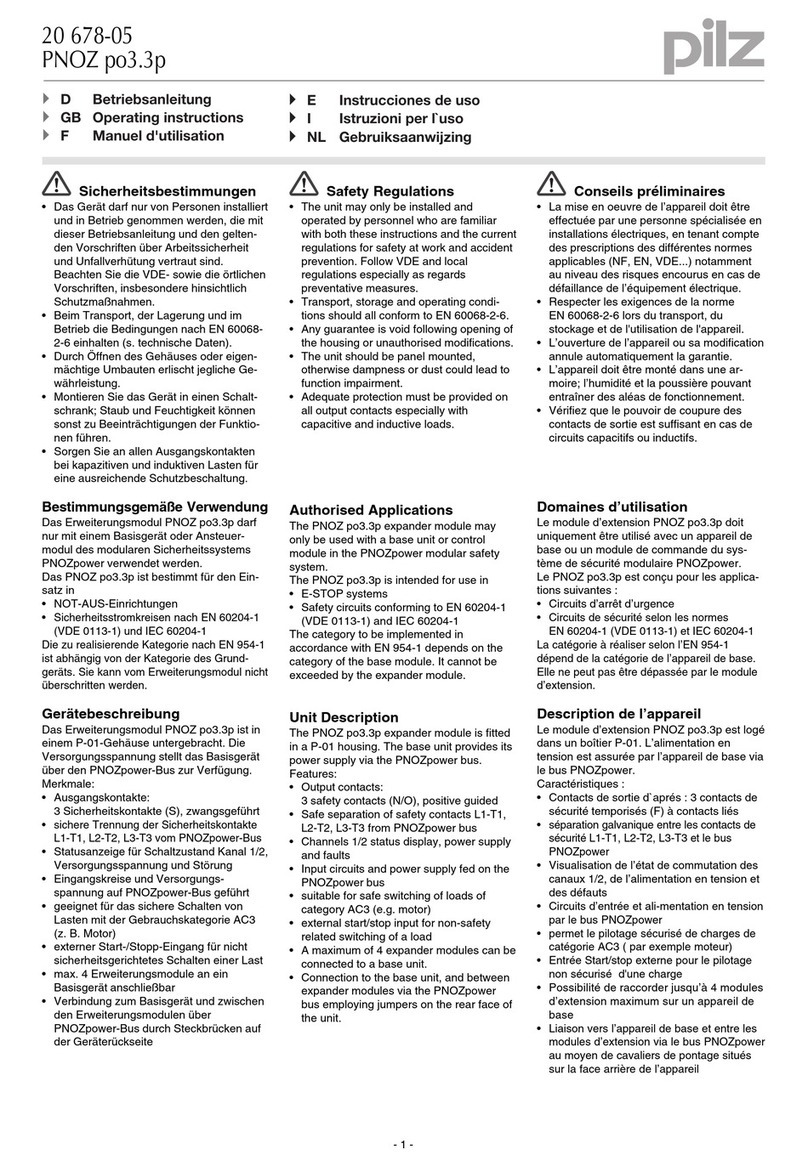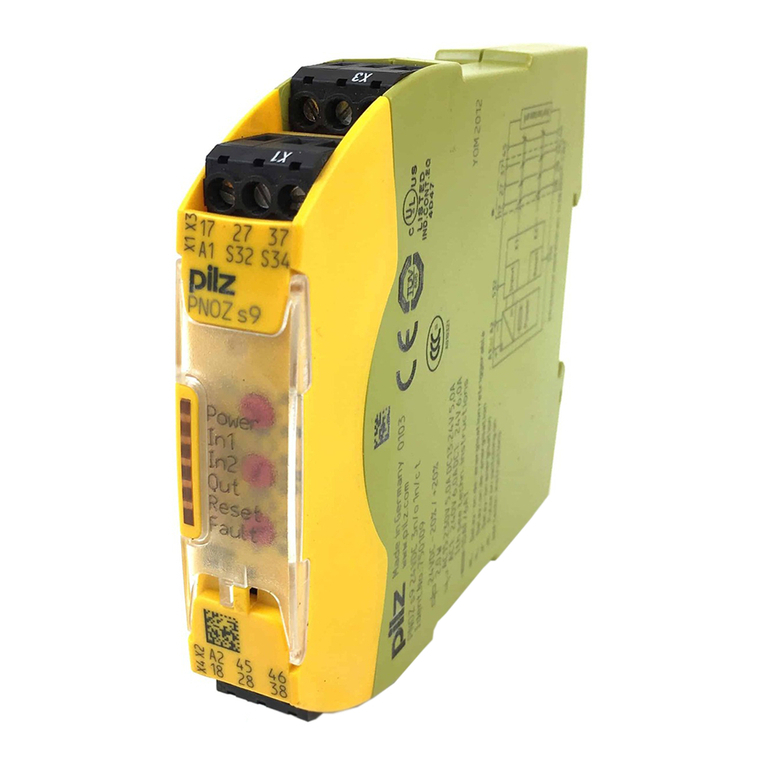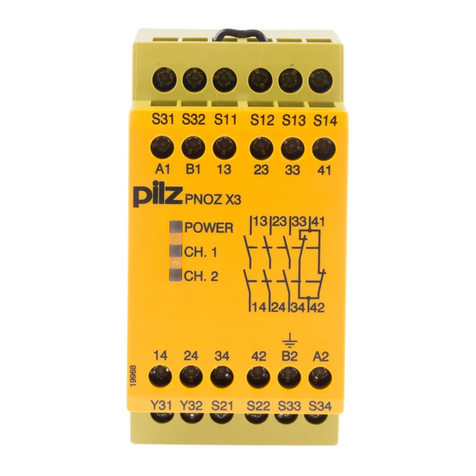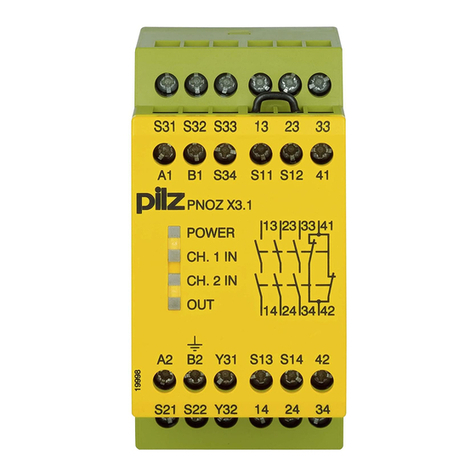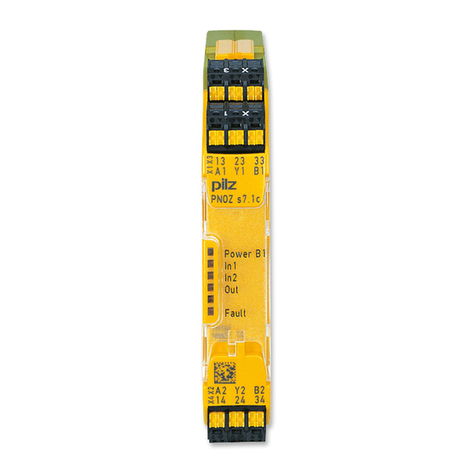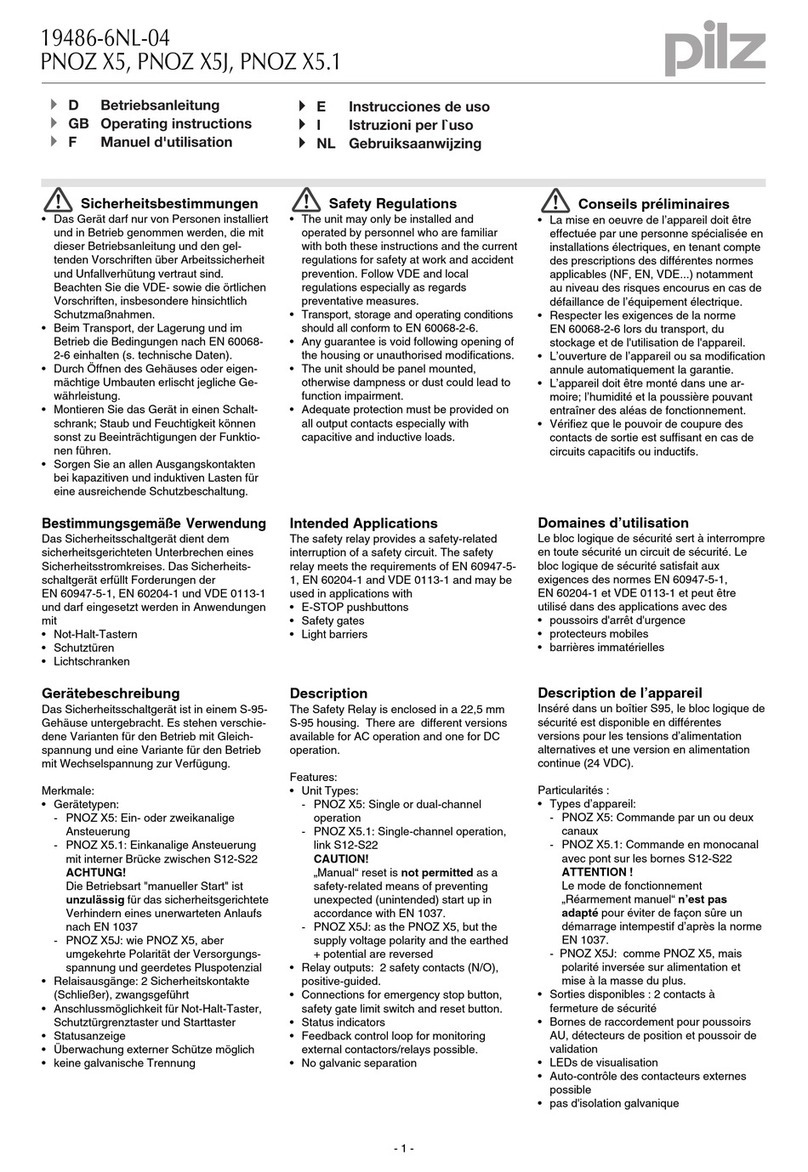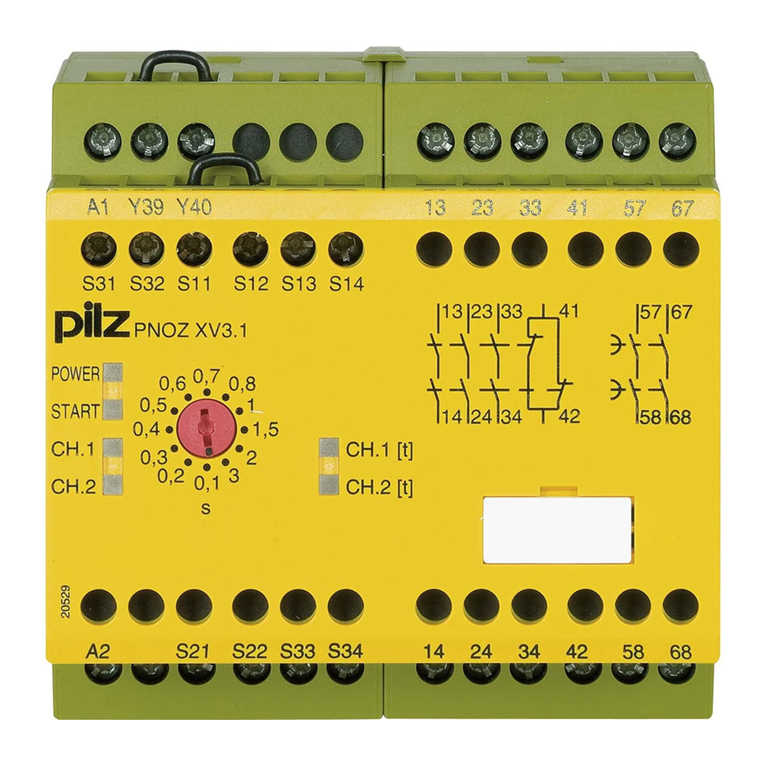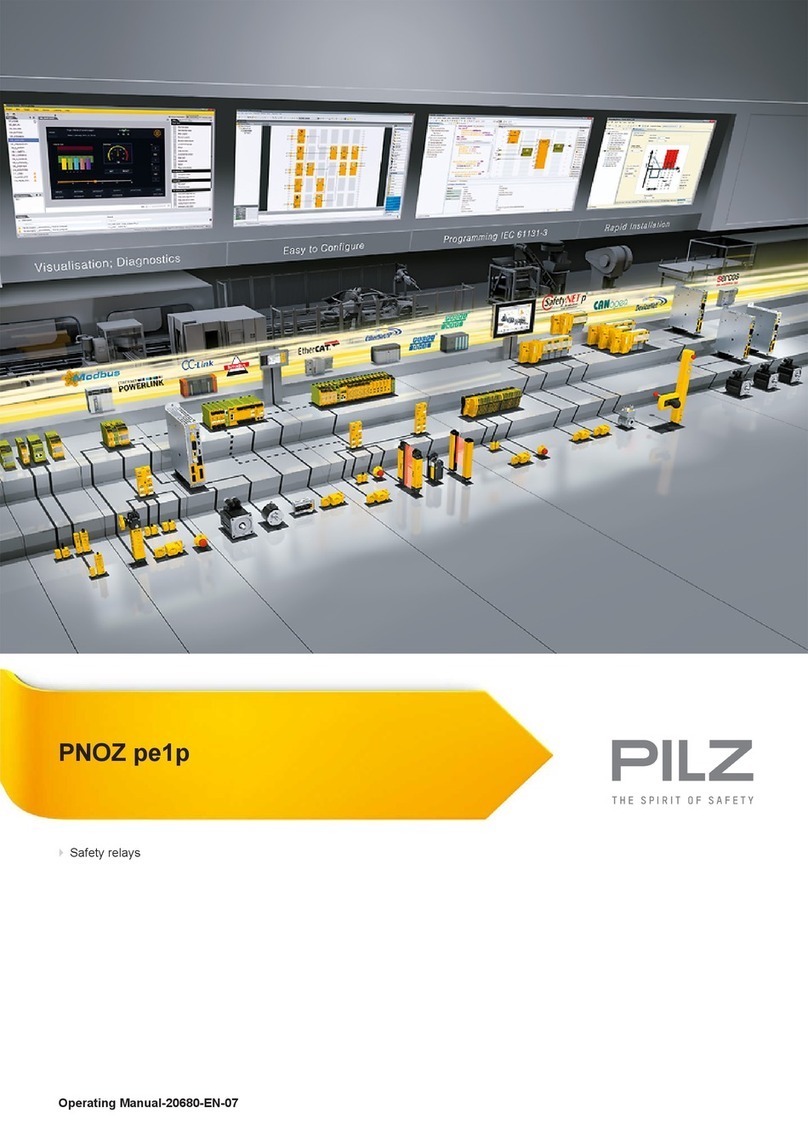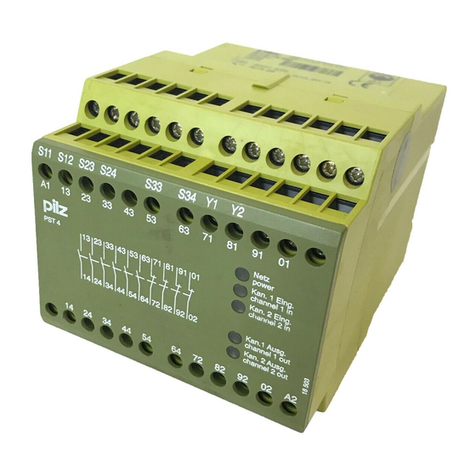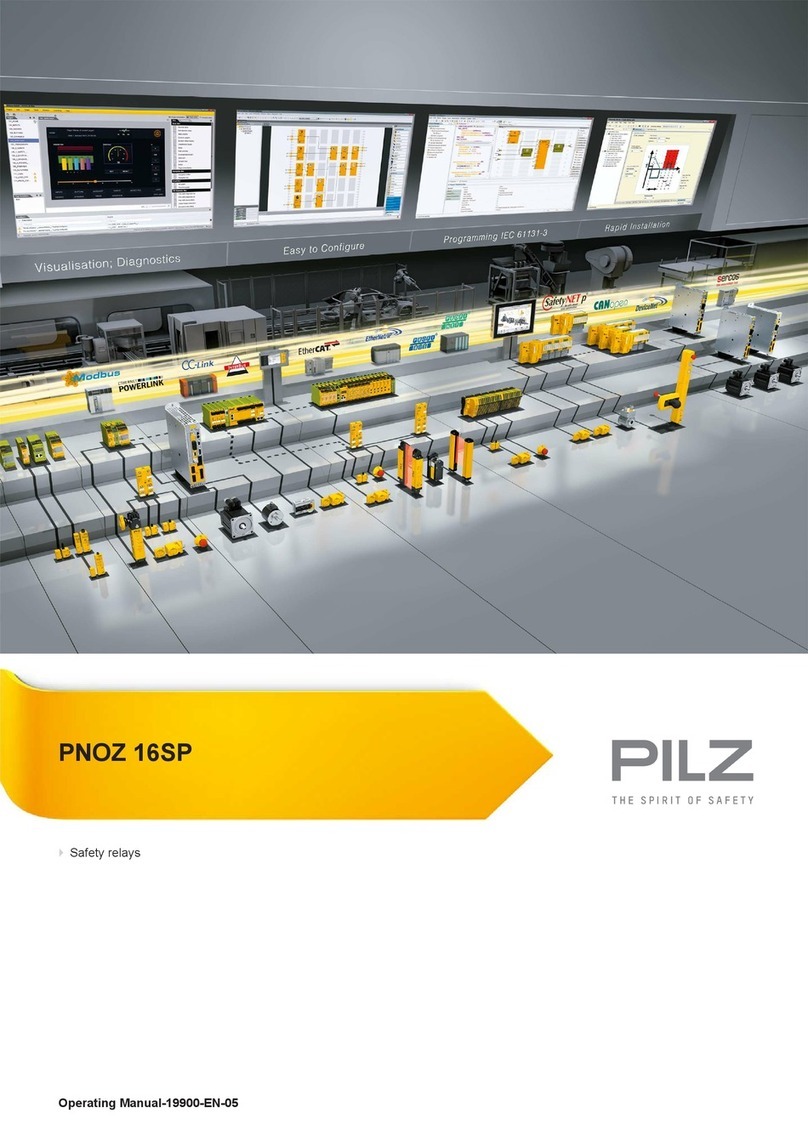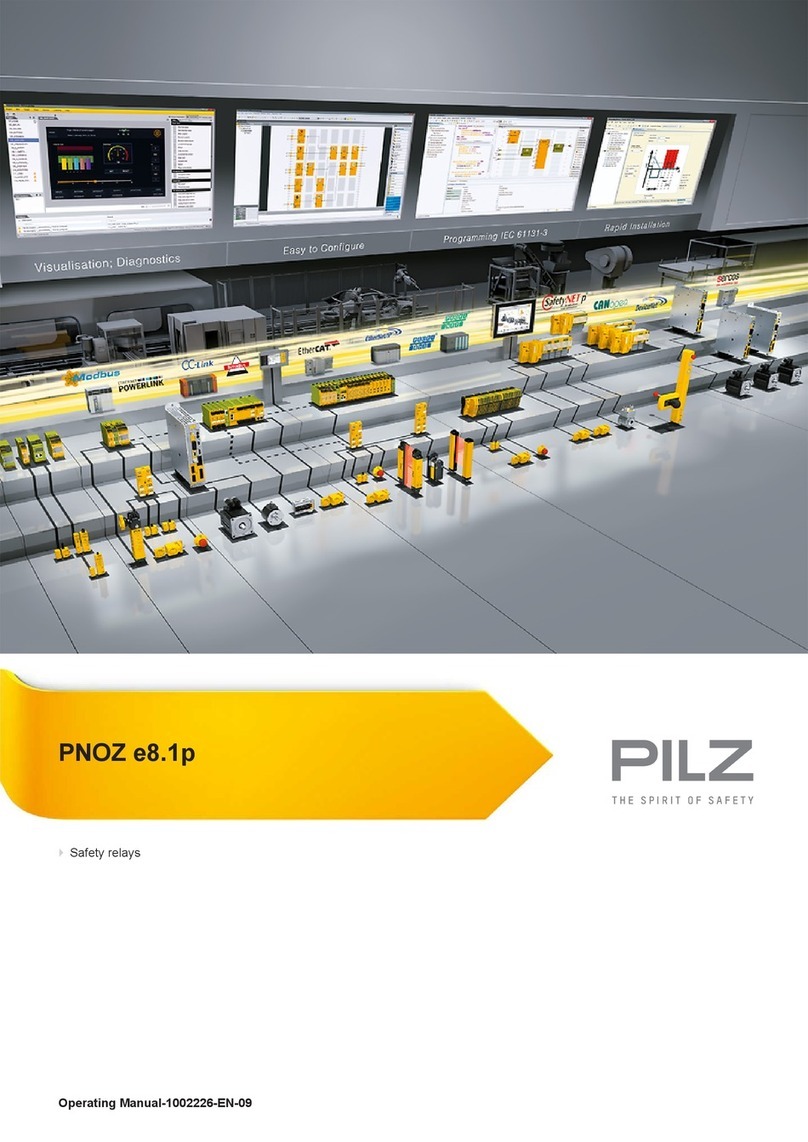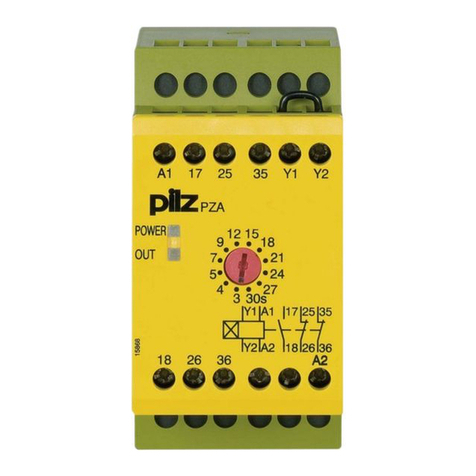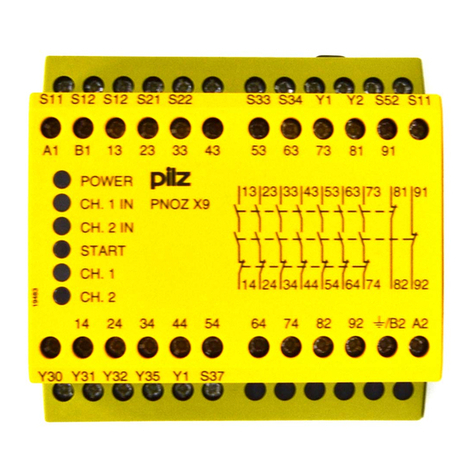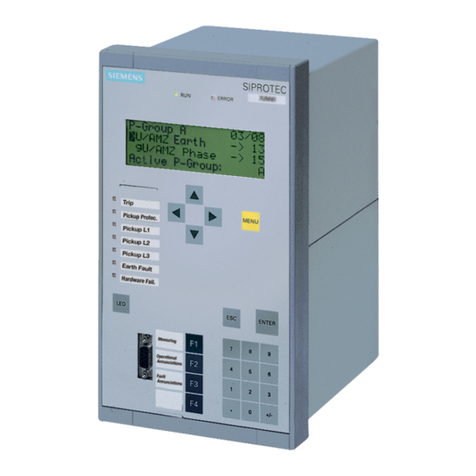
Contents
Operating Manual PNOZ s30
1001715-EN-19 | 4
5.4.5 Chip card...................................................................................................................................38
5.5 Input device types .....................................................................................................................39
5.5.1 Proximity switch ........................................................................................................................39
5.5.2 Rotary encoders........................................................................................................................40
5.5.2.1 Output signals ...........................................................................................................................41
5.5.2.2 Adapter for incremental encoders .............................................................................................42
6 Installation ..............................................................................................................................43
6.1 General installation guidelines ..................................................................................................43
6.1.1 Dimensions ...............................................................................................................................43
7 Wiring ......................................................................................................................................44
7.1 General wiring guidelines..........................................................................................................44
7.2 Pin assignment of RJ45 socket.................................................................................................44
7.3 Supply voltage...........................................................................................................................44
7.4 Connection of proximity switches..............................................................................................45
7.5 Connection of a rotary encoder.................................................................................................46
7.5.1 Connect rotary encoder to speed monitor.................................................................................47
7.5.2 Connect rotary encoder with Z index to speed monitor.............................................................47
7.5.3 Connect rotary encoder to the speed monitor via an adapter...................................................48
7.6 Connection of proximity switch and rotary encoder ..................................................................48
7.7 Reset circuit ..............................................................................................................................50
7.8 Feedback circuit ........................................................................................................................50
7.9 Select inputs..............................................................................................................................51
7.10 Semiconductor outputs .............................................................................................................51
7.11 Analogue output........................................................................................................................51
7.12 EMC-compliant wiring ...............................................................................................................51
8 Display menu - Configuration ...............................................................................................56
8.1 Create configuration overview...................................................................................................56
8.2 Operate rotary knob ..................................................................................................................57
8.3 Configure Speed Monitor ..........................................................................................................57
8.4 Password protection..................................................................................................................58
8.5 Use chip card ...........................................................................................................................59
8.5.1 Insert chip card .........................................................................................................................60
8.5.2 Write data to chip card .............................................................................................................60
8.5.3 Read data from chip card..........................................................................................................61
8.5.4 Transfer device parameters .....................................................................................................62
8.5.5 Duplicate chip card....................................................................................................................62
8.5.6 Compatibility with older device versions ...................................................................................63
8.5.7 Special cases and problem solving...........................................................................................64
8.6 Save configuration with Software SmartCardCommander........................................................65
8.7 Menu overview ..........................................................................................................................67
8.7.1 Permanent display ....................................................................................................................67
8.7.2 Basic settings Ini pnp pnp .........................................................................................................67
8.7.3 Basic settings for the rotary encoder.........................................................................................68
8.7.4 Settings .....................................................................................................................................70
8.7.5 Advanced settings.....................................................................................................................78




